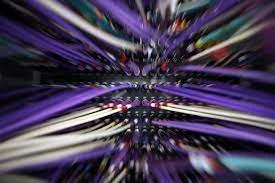Robotic Revolution: Shaping the Future with Automation
Introduction
Welcome to the era of the robotic revolution, where automation and robotics are transforming industries and reshaping the future of work and society. In this article, we delve into the impact of robotics on various sectors, from manufacturing and healthcare to transportation and agriculture. Join us as we explore the opportunities and challenges of automation and robotics and envision a future where humans and machines collaborate to create a more efficient, productive, and sustainable world.
Understanding Automation and Robotics
Defining Automation
Automation refers to the use of technology to perform tasks with minimal human intervention, streamlining processes, increasing efficiency, and reducing errors. From robotic arms on factory assembly lines to self-driving vehicles on city streets, automation technologies are revolutionizing industries by automating repetitive tasks and optimizing workflows.
Exploring Robotics
Robotics is a branch of technology that focuses on the design, development, and deployment of robots—autonomous or semi-autonomous machines capable of performing tasks in diverse environments. From industrial robots used in manufacturing and logistics to service robots assisting in healthcare and hospitality, robotics spans a wide range of applications and capabilities, revolutionizing industries and enhancing human capabilities.
Impact of Robotics on Industries
Manufacturing and Logistics
In the manufacturing and logistics sector, robotics has revolutionized production processes, increasing efficiency, precision, and productivity. Automated manufacturing systems, equipped with robotic arms and machine vision systems, enable mass production of goods with minimal human intervention, reducing costs and lead times while improving quality and safety standards.
Healthcare and Medicine
In healthcare and medicine, robotics is transforming patient care, diagnosis, and treatment, enhancing precision, accuracy, and outcomes. Surgical robots, equipped with advanced imaging and robotic arms, enable minimally invasive procedures with greater precision and control, reducing patient recovery times and complications. Service robots, such as telepresence robots and robotic exoskeletons, assist patients with mobility and rehabilitation, improving their quality of life and independence.
Transportation and Mobility
In transportation and mobility, robotics is revolutionizing the way people and goods move from one place to another. Self-driving vehicles, equipped with sensors, cameras, and artificial intelligence algorithms, promise to revolutionize the transportation industry, reducing accidents, congestion, and emissions while increasing mobility and accessibility for all.
Agriculture and Food Production
In agriculture and food production, robotics is optimizing farming practices, increasing yields, and reducing resource consumption. Autonomous drones and robots equipped with sensors and AI algorithms monitor crops, detect pests and diseases, and apply targeted treatments, optimizing agricultural operations and minimizing environmental impact.
Challenges and Opportunities
Economic Disruption and Job Displacement
One of the main challenges of the robotic revolution is the potential for economic disruption and job displacement. As automation technologies replace human workers in various industries, there is a risk of job loss and income inequality, especially for low-skilled workers. Addressing the social and economic impacts of automation requires proactive measures, such as reskilling and upskilling programs, social safety nets, and policies that promote inclusive growth and employment opportunities.
Ethical and Societal Implications
In addition to economic challenges, the robotic revolution raises ethical and societal implications that must be addressed. Concerns about data privacy, algorithmic bias, and autonomous decision-making underscore the need for ethical guidelines and regulations to ensure that robotics technologies are developed and deployed responsibly, with transparency, accountability, and respect for human rights.
FAQs
What is automation, and how does it differ from robotics?
Automation refers to the use of technology to perform tasks with minimal human intervention, streamlining processes and increasing efficiency. Robotics, on the other hand, is a branch of technology that focuses on the design, development, and deployment of robots—autonomous or semi-autonomous machines capable of performing tasks in diverse environments.
What are some examples of robotics applications in healthcare?
Some examples of robotics applications in healthcare include surgical robots, telepresence robots, and robotic exoskeletons. Surgical robots assist surgeons in performing minimally invasive procedures with greater precision and control, while telepresence robots enable remote patient monitoring and consultations. Robotic exoskeletons assist patients with mobility impairments in walking and rehabilitation exercises.
How is robotics impacting the transportation industry?
Robotics is revolutionizing the transportation industry through the development of self-driving vehicles and autonomous drones. Self-driving vehicles equipped with sensors and artificial intelligence algorithms promise to reduce accidents, congestion, and emissions while increasing mobility and accessibility for all. Autonomous drones are used for tasks such as package delivery, surveillance, and infrastructure inspection.
What are some ethical considerations in robotics?
Some ethical considerations in robotics include concerns about data privacy, algorithmic bias, and autonomous decision-making. Ensuring transparency, accountability, and respect for human rights in the design, development, and deployment of robotics technologies is essential for addressing these ethical challenges and ensuring that robotics benefits society while minimizing harm.
How can societies prepare for the impact of automation and robotics?
Societies can prepare for the impact of automation and robotics by investing in education and training programs that equip individuals with the skills needed for the future of work. Additionally, policymakers can implement policies and regulations that promote inclusive growth, protect workers’ rights, and ensure that the benefits of automation are shared equitably across society.
What is the future outlook for automation and robotics?
The future outlook for automation and robotics is promising, with continued advancements in technology driving innovation and adoption across industries. As automation technologies become more sophisticated and affordable, they are expected to play an increasingly prominent role in shaping the future of work and society, creating new opportunities for innovation, productivity, and economic growth.
Conclusion
In conclusion, the robotic revolution is reshaping industries, economies, and societies, ushering in a new era of automation and innovation. From manufacturing and healthcare to
